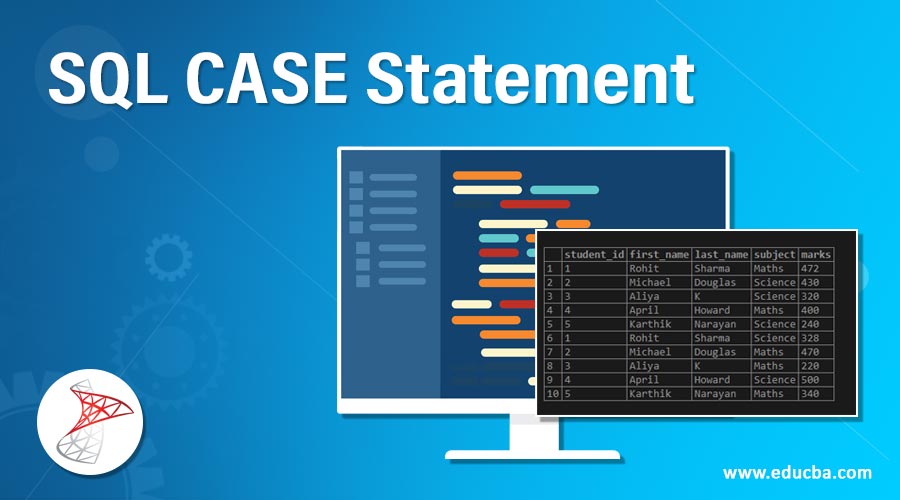
SQL CASE Statement Conditional Statements in SQL
The SQL CASE statement is a control flow tool that allows you to add if-else logic to a query. Generally speaking, you can use the CASE statement anywhere that allows a valid expression - e.g. with the SELECT, WHERE, and GROUP BY clauses. The CASE expression goes through each condition and returns a value when the first condition is met.
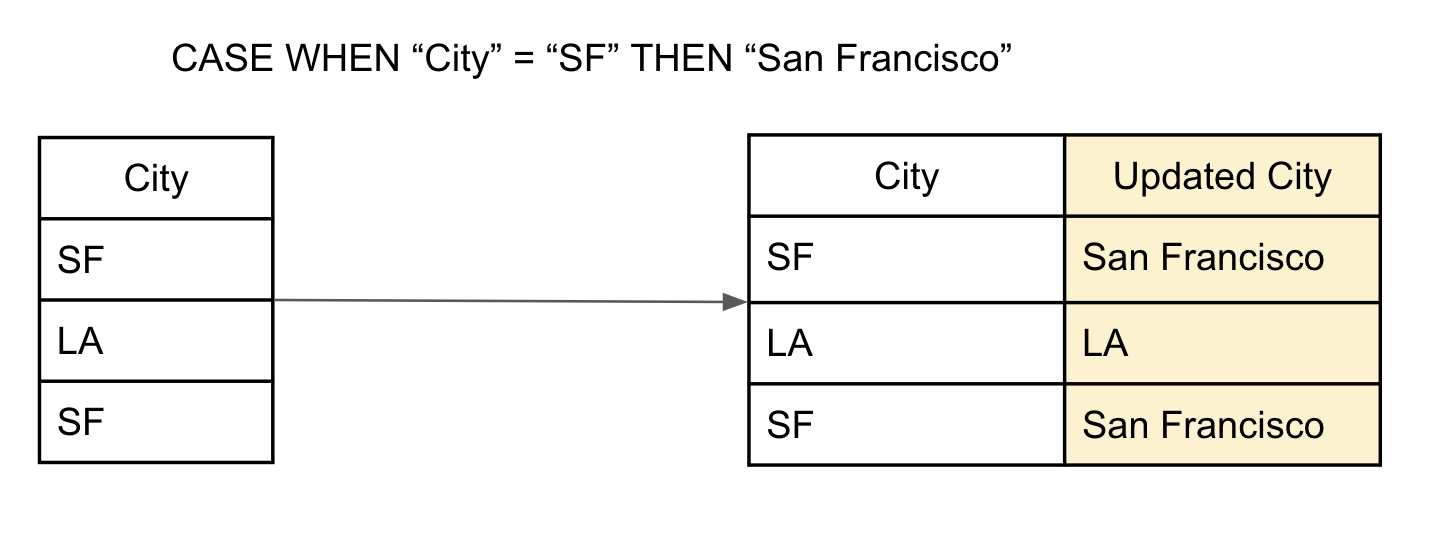
How CASE WHEN works in SQL with animated Gifs
CASE Statement in SQL Server is the extension of IF…ELSE statement. Unlike IF…ELSE, where only the maximum of one condition is allowed, CASE allows the user to apply multiple conditions to perform different sets of actions in MS SQL. It returns a corresponding value associated with the condition defined by the user.
60 Best Pictures Sql Server Case / Redundant Rows From Case Statement And Join Sql Server Stack
The CASE expression can't be used to control the flow of execution of Transact-SQL statements, statement blocks, user-defined functions, and stored procedures. For a list of control-of-flow methods, see Control-of-Flow Language (Transact-SQL). The CASE expression evaluates its conditions sequentially and stops with the first condition whose.
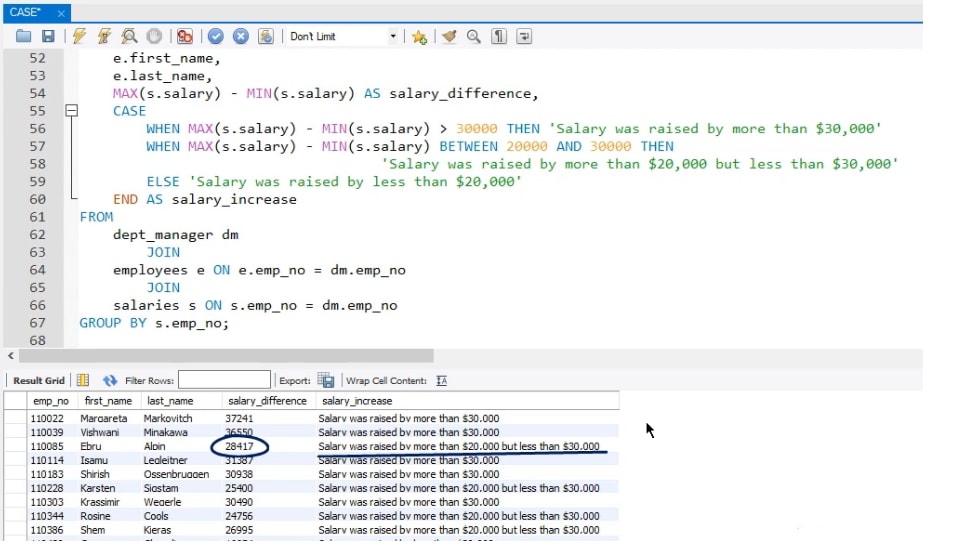
When to Use the SQL CASE Statement 365 Data Science
The SQL CASE Expression. The CASE expression goes through conditions and returns a value when the first condition is met (like an if-then-else statement). So, once a condition is true, it will stop reading and return the result. If no conditions are true, it returns the value in the ELSE clause. If there is no ELSE part and no conditions are.

Não consigo usar a Função Case no SQL Server Management Digital Innovation One
The CASE expression in SQL server allows us to apply if-then-else logic in a SQL statement. A CASE consists of a number of conditions with an accompanying custom result value in a case body followed by an optional ELSE clause. An expression value is checked by the conditions and if it matches any of the condition then the corresponding result.

Sql Select Case Where Hot Sex Picture
SQL CASE Examples. Let's look at some examples of CASE Statements in SQL. Example 1: Adding Multiple Conditions to a CASE statement. We can add multiple conditions in the CASE statement by using multiple WHEN clauses. Query: SELECT CustomerName, Age, CASE WHEN Age> 22 THEN 'The Age is greater than 22'. WHEN Age = 21 THEN 'The Age is 21'.

SQL CASE Statement When and How To Use It
Let's see it used in a few examples. The following query uses the CASE statement in the WHERE clause to filter single employees. FROM [AdventureWorks2019].[HumanResources].[Employee] WHERE CASE WHEN [MaritalStatus] = 'S' Then 1 ELSE 0 END = 1; As shown below, it returns only rows where [MaritialStatus] is S.
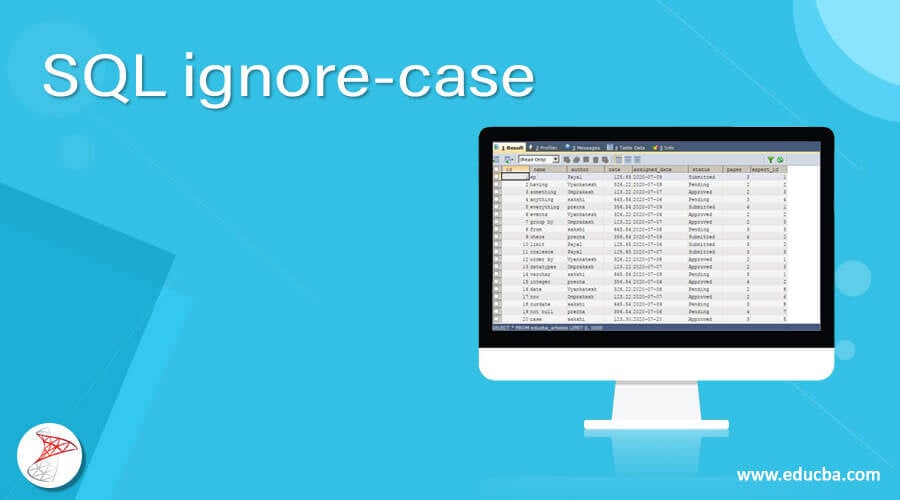
SQL ignorecase How to Check the casesensitivity of SQL server?
Here is the output: In this example: First, the condition in the WHERE clause includes sales order in 2018. Second, the CASE expression returns either 1 or 0 based on the order status. Third, the SUM() function adds up the number of order for each order status. Fourth, the COUNT() function returns the total orders.
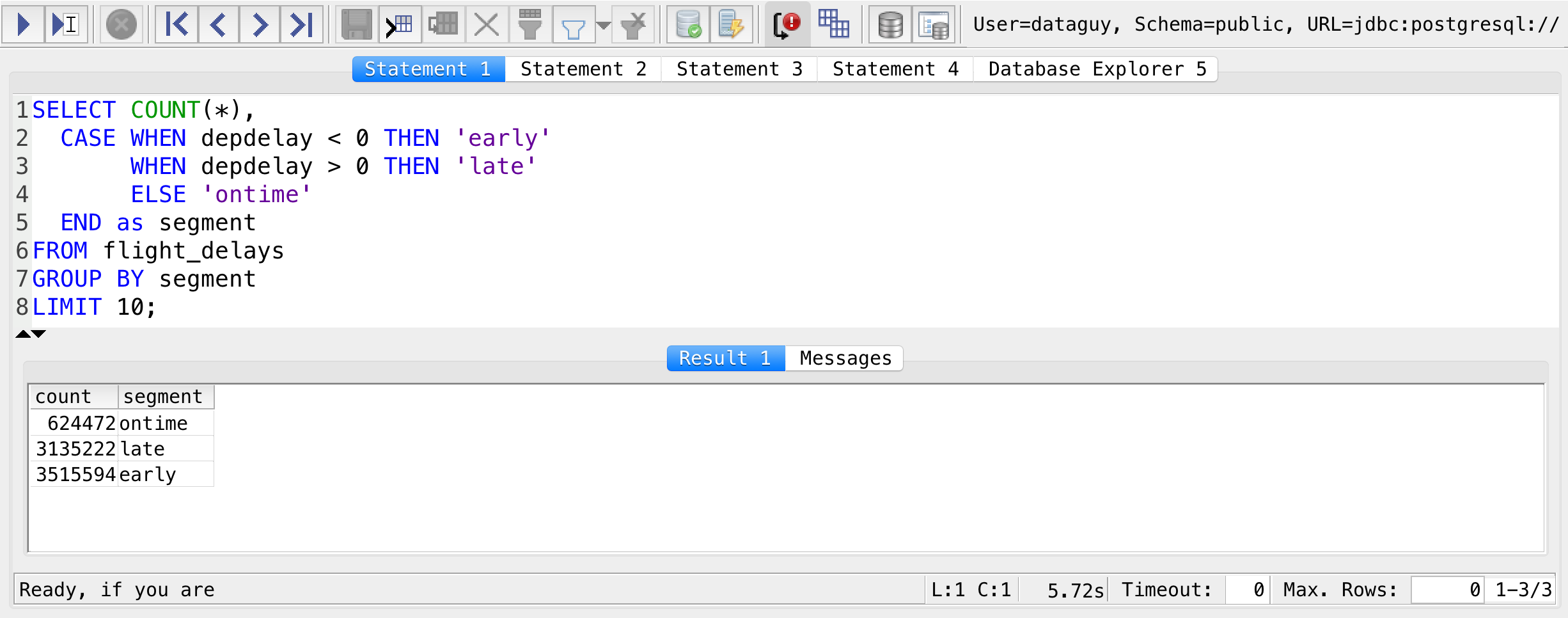
SQL for Data Analysis Tutorial ep6 Some Advanced SQL stuff Data36
In SQL Server, the CASE statement in the WHERE clause is a powerful tool that allows you to apply conditional logic to filter rows based on specified conditions. The CASE statement evaluates one or more conditions and returns a result based on the first condition that is true. Syntax. Here's a basic structure of a CASE statement in the WHERE.
The SQL CASE WHEN Statement Complete Guide
Nested case statements provide a powerful way to handle complex conditional logic in SQL queries. However, it's important to use them judiciously and keep the code readable and maintainable. In some cases, it might be more appropriate to use other constructs like derived tables, Common Table Expressions (CTEs) , or user-defined functions to.

CASE Statement in SQL Server(TSQL) Database Tutorials
SQL CASE Statement Syntax. The syntax of the SQL CASE expression is: CASE [expression] WHEN condition_1 THEN result_1. WHEN condition_2 THEN result_2. WHEN condition_n THEN result_n. ELSE result. END case_name. The CASE statement can be written in a few ways, so let's take a look at these parameters.
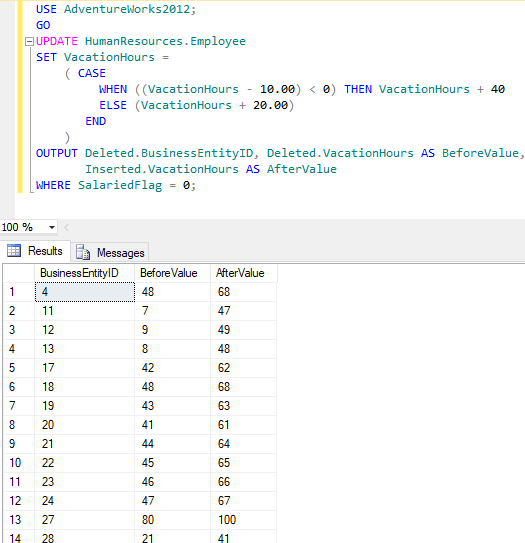
Understanding SQL server switch case (With Example) QA With Experts
The SQL CASE statement is a powerful tool that allows you to perform conditional logic in your SQL queries. The statement is used to evaluate a condition or set of conditions and return a value based on the result of that evaluation. Syntax.

Case Sensitive and Case InSensitive in SQL Server.
Before I go into details on how CASE works, take a look at the syntax of the CASE statement: CASE. WHEN
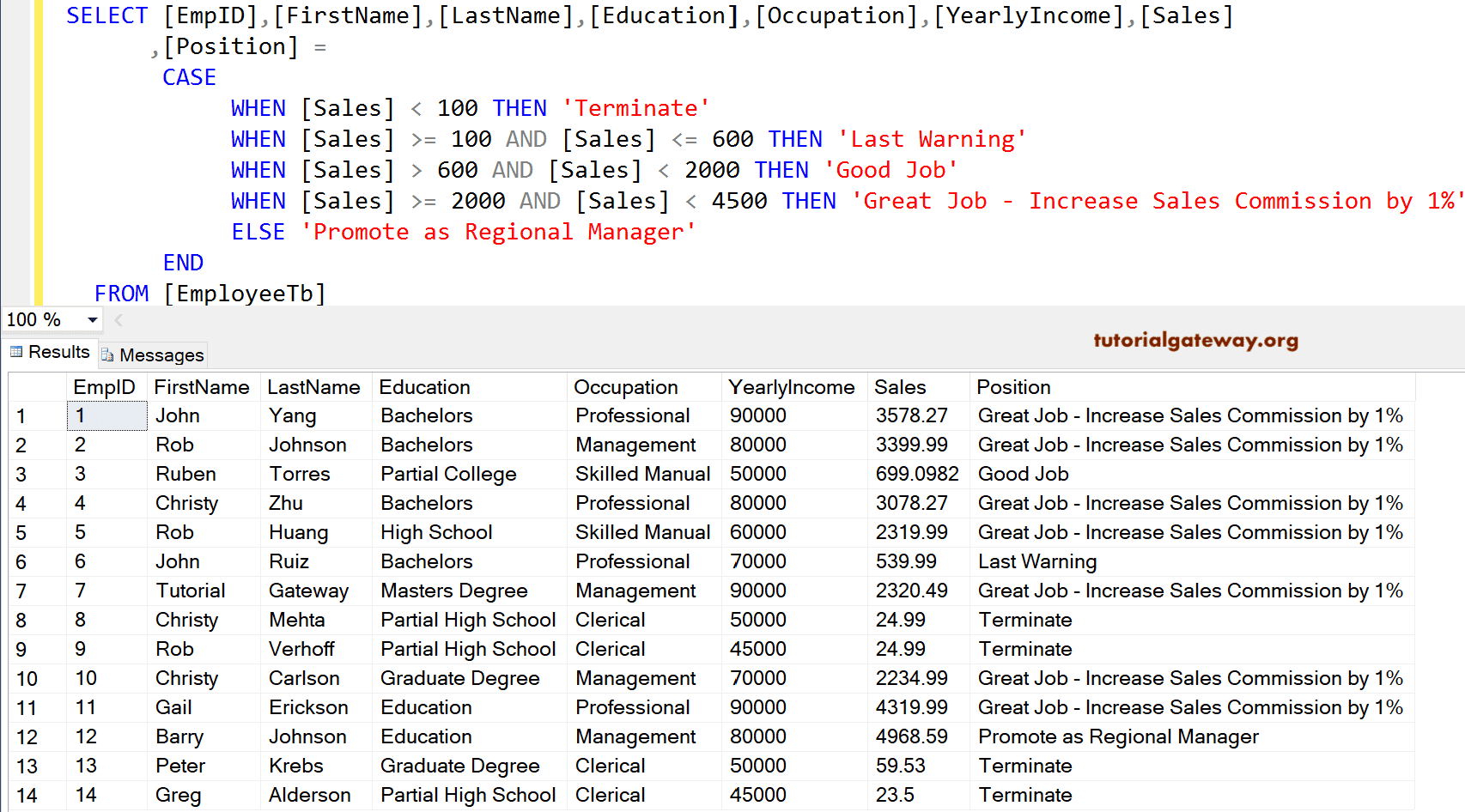
SQL CASE Statement
Let's illustrate with an example. The following SQL statement will return "Monday" if today is a Monday, otherwise it returns "Not a Monday". SELECT CASE WHEN DATEPART(WEEKDAY,GETDATE()) = 1. THEN 'Monday' ELSE 'Not a Monday' END; The following SQL script does the same, but rather uses the IF..
All about SQLServer TSQL Example for SUBSTRING with CASE statement
The SQL CASE expression allows you to evaluate a list of conditions and returns one of the possible results. The CASE expression has two formats: simple CASE and searched CASE. You can use the CASE expression in a clause or statement that allows a valid expression. For example, you can use the CASE expression in statements such as SELECT.

[Solved] mysql How to use two CASE in one SQL query
The case statement in SQL returns a value on a specified condition. We can use a Case statement in select queries along with Where, Order By, and Group By clause. It can be used in the Insert statement as well. In this article, we would explore the CASE statement and its various use cases. Suppose you have a table that stores the ProductID for.
- Electric Furnace Not Blowing Cold Air
- Almacenamiento De Mega Se Ha Agotado
- La Mafia Se Sienta A La Mesa Córdoba Fotos
- Donde Comer En Sagres Marisco Barato
- Efeito Da Cafeina No Organismo
- Catheter Size According To Age
- Home Banking Red Link Ciudad
- 000 Basic Libreria Tools En Libreoffice Getcellrange
- Compromisos Y Derechos Sobre Texto
- Codigo Postal De Ciudad Real